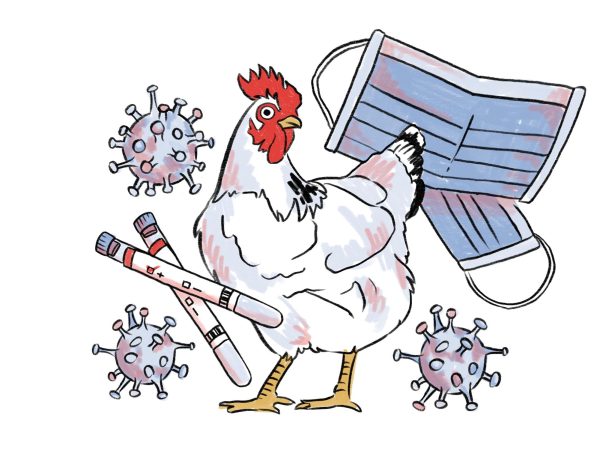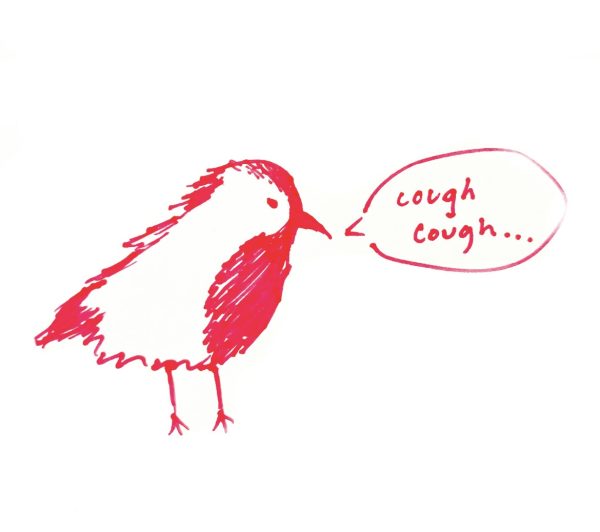
Bird flu, also referred to as avian influenza (HPAI), is a highly contagious viral disease that mostly affects bird populations, although it can also occasionally spread to mammals, including humans. HPAI, caused by Influenza A viruses, varies in severity by strain and species but can be deadly for domestic poultry. It spreads rapidly among flocks through infected birds’ saliva, feces and nasal secretions, infecting others through direct contact or contaminated surfaces.
According to an official from Washington’s Department of Fish and Wildlife, there has been no confirmation of HPAI in Walla Walla County this year. However, the first account of human infection with HPAI in Washington State was reported in Franklin County on Oct. 20, with no evidence of human-to-human transmission.
Experts recommend using disposable gloves, disinfecting tools, and avoiding food and drinks while handling animals to prevent HPAI transmission. Sick or dead birds should be reported, securely double-bagged or buried to keep them out of reach of wildlife.
Associate Professor of Biochemistry, Biophysics and Molecular Biology, James E. Russo, has been teaching an infectious diseases course at Whitman since 1995.
“This is almost my 30th year to do this. And when I first started, the course of bird flu did not exist in the sense of how we’re describing it now,” Russo said.
Russo described the origins of bird flu and influenza.
“The pandemics that humans have experienced, like the 1918 pandemic, was likely a bird virus that got into pigs… Pigs can re-assort or combine viruses together. So they are called the mixing species, and so they can be infected by bird viruses and human viruses, and they can recombine and create new viruses that can become very transmissible in humans,” Russo said.
While cases of bird flu were documented in Indonesia and Hong Kong in the past, there was no evidence of sustained human-to-human transmission during these outbreaks.
Russo explained that the detection of the HPAI in cows raised significant concerns, especially given the large number of workers on U.S. dairy farms and ranches who regularly handle cattle, as well as the widespread consumption of cow’s milk.
Russo also expressed his concern about the lack of surveillance.
“We’ve continued to have these small outbreaks of people who are very close to animals. It’s a hard degree of transmission that humans can be infected with, but we don’t know very well what percent of those individuals died,” Russo said.
Russo continued, discussing the impact of getting vaccinated and how that would prevent humans from getting infected.
“If I get infected with an influenza virus, I want to have antibodies that will bind and neutralize that virus before it can infect my respiratory tract,” Russo said.
As concerns about the potential spread of bird flu intensify, Dr. Susan E. Smith, a microbiologist and expert in infectious diseases, has weighed in on the recent developments. According to Smith, understanding the risks of HPAI, particularly in relation to human transmission, is crucial to containing potential outbreaks.
“Zoonotic risks are not merely potential. Numerous people in Asia and some in Europe and the Americas have been diagnosed with bird flu. The real risk is human-to-human transmission, which so far has not happened, at least in large numbers. As far as I am aware, nobody knows exactly which mutations in the virus would facilitate this, and also nobody knows if the severity would be attenuated or not in that case… so nobody knows the real risk,” Smith said.
Smith highlighted that there have been reports of a person in Missouri exhibiting symptoms similar to bird flu, despite no direct contact with poultry or agricultural environments.
“This case raised an initial flag. It’s still unclear if the person had been confirmed positive for avian influenza, but it’s concerning because other healthcare workers who treated the individual also showed symptoms of a respiratory disease, “Smith said.
Smith emphasized the importance of thorough testing and surveillance in identifying potential cases early.
“You need data. Without proper testing, it’s impossible to know how widespread it is before it happens,” Smith said.
Russo added that because there is no requirement to do surveillance and testing, it is unclear how many people have been infected with HPAI.
“We have differences in oversight between the US Department of Agriculture, [which] regulates animals for food production, and the Center for Disease Control [that] regulates transmission of viruses in humans, but they don’t have the ability to regulate the food and other parts… And you have a lot of farmers who, if they don’t, aren’t required to submit to testing,” Russo said.
Russo believes the situation is dangerous, as a virus with the potential to become pathogenic in humans is now widespread yet remains largely overlooked.
Despite global efforts, Smith is concerned that current surveillance systems may not be robust enough.
“We spend a lot of time critiquing other countries for not sharing data, but we have it happening right here in our own backyard,” Smith said.
Smith’s comments come as experts warn that the next respiratory pandemic is not a matter of “if” but “when.” The scientific community continues to watch closely for signs of human transmission of HPAI, hoping to prevent another global health crisis.






